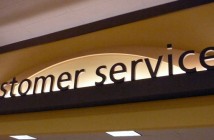You’d think that with all the billions of dollars being spent on customer service and training that service would be great everywhere. Wrong. Service is still lousy-and in my opinion-getting worse!
How come?
Big question. Lots of reasons. Lots of complex issues. (If the answers were easy your service would be great.) Upside down priorities brought about by lack of understanding and delivery of what the customer wants and needs. And failure to make the customer the star of your company policy rather than the goat of it. This is compounded by the overall lack of responsibility taken by employees for actions that customers require. “It’s not my job,” and other issues of blame (the opposite of responsibility) are the biggest reasons why customers go to competitors. Here are my picks for “Excellent Customer Service” in Bend for 2002 (not in any order).
1. Costco
2. Deschutes County Building Permit Department
3. Bob Thomas
4. Scanlon’s Restaurant
5. Safeway
6. Les Schwab
7. Industrial Finishes & Systems
My picks were based on “exceeding my expectations.”
Why customers leave or stop doing business with you: key reasons for leaving are.
· Undesirable Staff Attitude
· Not Making the Customer Feel Valued
· Dishonesty or Lack of Integrity
Here are the Top 10 reasons I think service is bad (and getting worse).
Try to read these without squirming. How you answer and follow through on the hard questions will determine who gets the business.
1. Wrong mission statement (this is so easy but CEO’s don’t get it.) Your ad agency created it-no one gets it-no one knows it-it doesn’t relate to the customer, it relates to the company and stockholders-and, if you put a gun to the heads of your employees and said “recite our mission statement or die,” they’d all be dead.
If your mission statement isn’t about your customer, trash it! If your mission statement was written by your CEO and executives behind closed doors, trash it! Companies confuse mission statements with vision statements. CEOs should be and are good at writing vision statements, but to get employee buy in, employees should be involved in helping to write the company mission statement. Who wrote your company mission statement?
2. Poor examples set by upper management. The ones who are inaccessible to customers and employees alike. It’s easy to recognize them-they’re the ones who have their calls screened with the words, “can I tell him/her what this is in reference to?” They’re also the ones you can count on NOT to return your call. People more concerned with helping themselves than helping others. How much day today contact does your upper management have with your customers?
3. No written principles for customer are established. Just a bunch of rules and policies-most of which are written in terms of the company, not the customer. Principles are what you live by-policies are what you live with. Do you have written customer principles to guide your employees and your business by?
4. Companies allow employees to be rude to customers, and tell customers “no.” When you deny a customer, their need still exists AND they are mad. Then you add to the fire by saying, “Don’t talk to me like that.” Or “I don’t have to take this.” Good move. A complaining customer is seen as a “hassle” rather than an opportunity. Who is allowed to tell a customer no? How do you handle, document and react to complaints?
5. We are living in an era of responsibility shirkers and blamers. “It’s not my job” is their credo. Responsibility takers are so rare that they often receive awards and have articles written about them. Does the person who takes the complaint follow through to see that it was handled? Do you reward your employees for exceptional compliant handling?
6. Companies are concerned with customer “satisfaction” rather than “loyalty.” Satisfaction is the lowest form of loyalty. Satisfied customers will shop anywhere-loyal customers will fight before they switch and will get others to do business with you by referral. Satisfied customers are apathetic. Loyal customers will be your advocates. Are you measuring satisfaction or loyalty?
7. Concentrating on competitive issues rather than competitive advantages. “Our price is too high”-“Our market share is too low,” are competitive issues-(airline) customers want baggage room underneath row one and drinkable coffee-those are competitive advantages. (The definition of competitive advantage is: something the customer considers very important, at which you or your company excels.) Competitive advantage is the most overlooked issue in customer service. Based on the new definition provided above, have you identified your competitive advantages?
8. Companies make the fatal mistake of only providing “company training” and “policy (rules) training.” They MAY provide some “customer service” training, but very few offer any “personal development” training (positive attitude, goals, listening, responsibility, pride or communication skills.) This is especially fatal with frontline people-people who need to know it starts with positive attitude-not the company policy or manual. Rule of thumb: provide as much personal development training as you do company training. How much personal development training do you provide the employees who need it the most?
9. Companies only train once in a while instead of every day. Fifteen to thirty minutes of training a day will make any employee a world class expert in five years. How much daily training do you provide?
10. Failure to realize who is really in sales and service. Anyone who talks to a customer (often referred to by mistake as a client, patient, member, passenger, subscriber or guest.) Oh, let’s not forget fellow employees. Do you have a list of people who interact with customers daily? Do the people on that list understand, execute and deliver the mission and customer service principles of the company in a world class way?
“Job security, you don’t get paid for your time. You get paid for the value you bring to the table. If you want more security, become more valuable”
Dave Meholovitch “Excellence in Customer Service” – His focus. Measuring Customer Service. He can be reached email dlm@bendcable.com or 312-4183.




